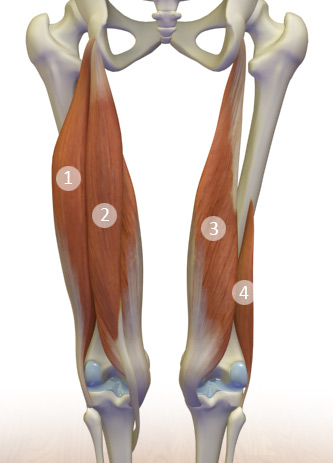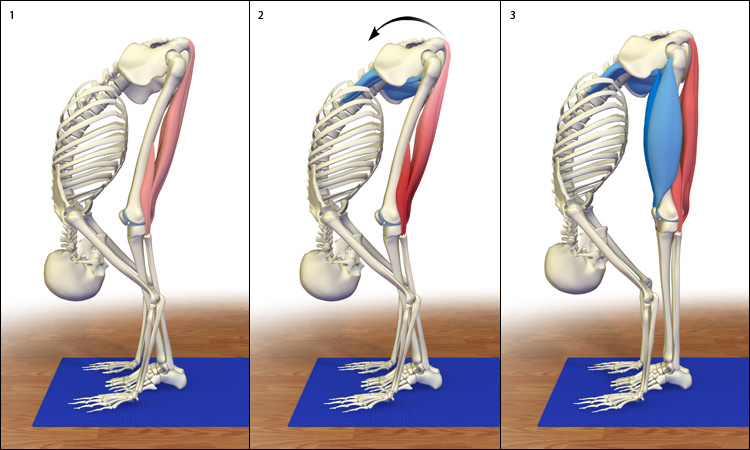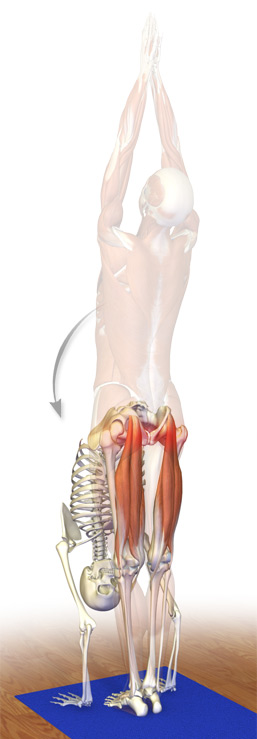 |
Sore hamstrings:
Typically, when practicing forward bends such as Uttanasana we straighten the knees and then bend forward. This focuses much of the stretch on the region of the proximal hamstrings at their origin from the ischial tuberosity. If overstretching occurs and we continue to bend forward in this way, the result can be sore hamstrings that do not get better on their own. This is especially true if we are practicing repetitive forward bends, as with the Vinyasa Flow series. This soreness is usually located in the region of the sitting bones.
Breaking the cycle:
Overstretching muscles can create micro-tears in the substance of the muscle, resulting in an area of weakness. Things in nature tend to follow the path of least resistance. This means that, when we stretch a muscle in which a region has been injured, the stretch tends to focus in that region and aggravate the injury—a bit like a bald spot on a tire. In order to heal the sore area of the muscle, it is necessary to temporarily alter the method of stretching in order to distribute the stretch to a healthy region of the muscle and give the injured part an opportunity to heal. |
The following movements aid to distribute the stretch along the length of the hamstrings:
1) Bending the knees releases the hamstrings at their insertions on the lower legs.
2) Activating the psoas muscle tilts the pelvis forward and stabilizes the origin of the hamstrings. This action draws the torso towards the thighs. (Please click here to learn how to activate the psoas.)
3) Maintaining the pelvis tilting forward and gently contracting the quadriceps to gradually straighten the knees focuses the stretch on the distal regions of the hamstrings and away from the overstretched area at the origin. Contracting the quadriceps also results in “reciprocal inhibition” of the hamstrings and causes them to relax into the stretch. (For more on reciprocal inhibition, please click here.)

 © 2007 Raymond A. Long MD.
© 2007 Raymond A. Long MD.
It is best to build this new method of stretching over time. If pain occurs in the hamstrings, one should back off on the stretch by slightly bending the knees.
- If you are new to integrating anatomy into your practice, remember that it is not necessary to memorize this technique on your first pass. Begin by enjoying the beautiful images of the body in yoga. This alone will awaken your brain's awareness of the anatomy during your practice. Return at a later date for a closer look and then gently go through the motions illustrated above as you practice. Then leave it. Your unconscious mind will create new circuitry while you rest. Enjoy this process and when you return to the mat, you will be surprised at how easily you access this technique.
Namasté,
Ray and Chris
Note:
Always practice under the guidance of an experienced instructor.
Always, in your particular case, consult your health care provider before practicing yoga or any other exercise program.




 © 2007 Raymond A. Long MD.
© 2007 Raymond A. Long MD.